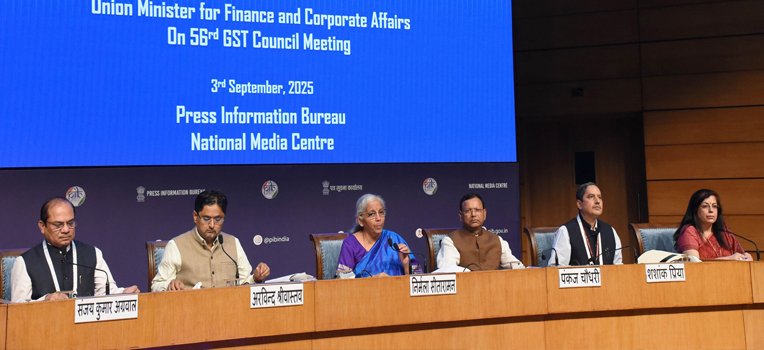INDUSTRY
IRDAI’s new policy tries to make motor insurance affordable as it addresses lopsided growth of premium
- IBJ Bureau
- Sep 17, 2022

A new option in
motor insurance brings good news for vehicle owners concerned with rising
premium rates. This July, the Insurance Regulatory and Development Authority of
India (IRDAI) permitted insurers to launch pay-as-you-drive (PAYD) policies.
The new motor insurance schemes let insurance companies charge premiums linked
to mileage of a vehicle and quality of driving.
The PAYD policies
facilitate flexibility of premiums, which translate into a lower premium if a vehicle
is driven less and higher when it is driven more. Such schemes are applicable
only for the own-damage (OD) motor insurance segment – insurance that covers
any damages incurred by a vehicle owned by the insured – including accidents,
natural calamities, man-made disasters, theft, fire, riot, strikes and so on.
The third-party (TP)
motor insurance segment, on the other hand, provides cover for damages incurred
by any third party or his vehicles or property in an accident with a vehicle owned
by the insured. The TP insurance policy does not cover damages caused to the
insured or his vehicle as they are covered under the OD segment.
“The PAYD
insurance policy is a welcome move by the regulator, especially at a time when
the pandemic has changed the way we work and travel. These add-on covers will
definitely appeal to the customers who are working from home more often, thus
making car insurance cost effective for them,” notes Udayan Joshi, the president
(underwriting and reinsurance) of Liberty General Insurance.
The IRDAI’s proposal to push PAYD policies is aimed at making motor insurance more flexible and affordable. It is also designed to help spread penetration of the OD insurance segment, which is way behind the TP segment as it is mandatory for all vehicles to have TP insurance policy.
PAYD, PAYU & PHYU...
- Applicable only
for OD motor insurance segment
- Many versions of
PAYD policies, such as PAYU and PHYU, in vogue
- Premium rates based
on actual use of vehicles, their mileage, driving behaviour of the insured and
maintenance of vehicles
- Insured to choose
among the three mileage limit slabs of 2,500 km, 5,000 km and 7,500 km annually
- The lower the
mileage limit, the bigger the discount over the normal premium
- Insurance cover
valid up to exhaustion of mileage limit chosen by the insured
- Add-on cover to be
purchased before limit is exhausted
- State of vehicle
and mileage completed transmitted to insurer through a telematics device fitted
in vehicle of insured
How PAYD works...
A regulatory
sandbox of the IRDAI facilitated the introduction of technology-enabled concepts
in OD motor insurance policies in July this year. Since then, many general
insurance companies have introduced their own versions of PAYD policies, such
as pay-as-you- use (PAYU) policy, pay-how-you-use (PHYU) policies and the like.
In all these plans, premium rates are based on the extent of actual use of vehicles,
their mileage, driving behaviour of the insured and maintenance of vehicles,
among others.
The PAYD policies
allow the insured to set a mileage limit for their vehicles. The insurer offers
stipulated discounts over the normal premium for the mileage selected by the
insured. There are three slabs under the PAYD policies – 2,500 km, 5,000 km and
7,500 km annually. The lower the mileage limit, the bigger is the discount over
the normal premium.
The insurance cover
will be valid only up to the exhaustion of the mileage limit chosen by the insured.
An add-on cover, seeking the same or a higher mileage limit, can be purchased
before the limit is exhausted.
A telematics
device is fitted in vehicles of insured under the PAYD policy. The device monitors
the condition of vehicles and driving habits of the insured and the like. This
data is then interpreted to give discounts to the insured who drive less and
carefully. The data can also penalise rash and negligent drivers.
These developments
appear to be good news for those who own multiple vehicles or have not been
driving too much due to COVID restrictions. They will not have to shell out
full premium, if their vehicles are not being used too much. Besides, these
usage-based policies are cheaper for those with less usage, such as people
living in small towns and people with multiple vehicles.
“Customers do not
necessarily use their vehicles in a similar manner. Some customers may have a
lesser frequency of vehicle usage or prefer to use public transport or organisational
transportation facilities. The IRDAI’s circular on motor insurance add-ons is
principally a usage-based cover as an add-on to an OD policy. The premium of
such policies is charged on the basis of driving pattern of the insured. The
policy gives additional protection for those customers who have a lesser
frequency of vehicle usage,” points out T A Ramalingam, the chief technical officer
(CTO) of Bajaj Allianz General Insurance.
Meanwhile, insurers
are increasingly starting to use telematics data from vehicles – like policyholders’
risk exposure and distance driven – to determine the premium rates of motor vehicle
insurance policies. In fact, every individual has different driving and vehicle
usage patterns. The new add-ons, aided by high-end technological tools, like
artificial intelligence (AI) and data analytics, will help insurers track
trends and augment product innovation in their insurance policies.
“The IRDAI has created a win-win situation. Own damage coverage can now be tailored, based on a customer’s driving behaviour. It will benefit customers who have low vehicle usage and who take care of their vehicles and follow traffic rules,” stresses Rakesh Jain, the CEO of Reliance General Insurance.
Reality check
Meanwhile, initial
excitement over likely big discounts to premium in PAYD policies fades away on
closer examination. In fact, the discounts offered are not quite impressive. A 7,500-km
annual mileage slab fetches only a small 10 per cent discount on the regular
premium. The discounts, of course, get a little more attractive for a lower
limit of 2,500 km. But that works out to an average commute of less than 7 km
per day. So, a proper, cool-headed scrutiny of the existing mileage limits and
their corresponding discounts on premiums must be done before opting for a PAYD
policy.
Another important
factor is that the discount applies only on premiums of the OD policies. There
are no discounts on premiums of the mandatory TP policies.
There is also
another ticklish issue of installation of telematics devices in the vehicles
insured under the PAYD policies. No doubt, the devices will reduce insurance
premium. But this discount comes at a cost as telematics devices raise concerns
over privacy of the insured. Experts advise that only those who are comfortable
with the idea of insurers having 24x7 data on their vehicles’ movement should
opt for PAYD policies.
Although limited,
the lower discounts on premiums are perhaps the right way to push the
penetration of OD policies across the country. A quick glance at the premiums
of OD and TP policies reveals the challenges before the Indian motor insurance
market.
Total motor
insurance premium mop-up during 2021-22 rose by 3.98 per cent at Rs 70,432
crore over last year’s collection of Rs 67,735 crore. The overall premium
figures were heartening, considering 3.98 per cent growth in FY22 as against
around 2 per cent decline in FY21. However, a look at the disaggregated numbers
in FY22 shows what is actually wrong with the Indian motor insurance segment.
The TP segment – which is mandatory for all vehicle owners – accounts for over
60 per cent – or more than Rs 43,000 crore – of the total premium underwritten
in FY22. This leaves the OD segment with a meagre 40 per cent – or around Rs
27,000 crore – of the total motor insurance premium mopped up last year.
A bigger headache
for motor insurance companies is an exceptionally-high claims ratio – a
percentage of claims incurred by insurers in relation to premiums earned by
them – of an average of around 80 per cent. So, even when insurers earn higher
premiums from the TP segment, they end up servicing around 80 per cent of the
premiums earned towards settlement of claims. This erodes their profit margins
and weakens their finances.
The IRDAI’s PAYD
policy undoubtedly attempts to make motor insurance premium affordable. The new
policy also looks at addressing this lopsided premium growth, tilted highly in
favour of the TP segment. The new options in the OD segment aims at providing
the much-needed fillip to this segment and thus trying to unburden motor
insurers, who are reeling under high claims from the TP segment.
These are early days for PAYD and its other
variant motor insurance policies. There may be disappointments over lower rates
of discounts on the premiums today. But the situation may improve as days pass
by, more new products are launched and the volume of policies increases. And if
that happens, PAYD policies could end up driving the domestic motor insurance
market.





















Report By
View Reporter News